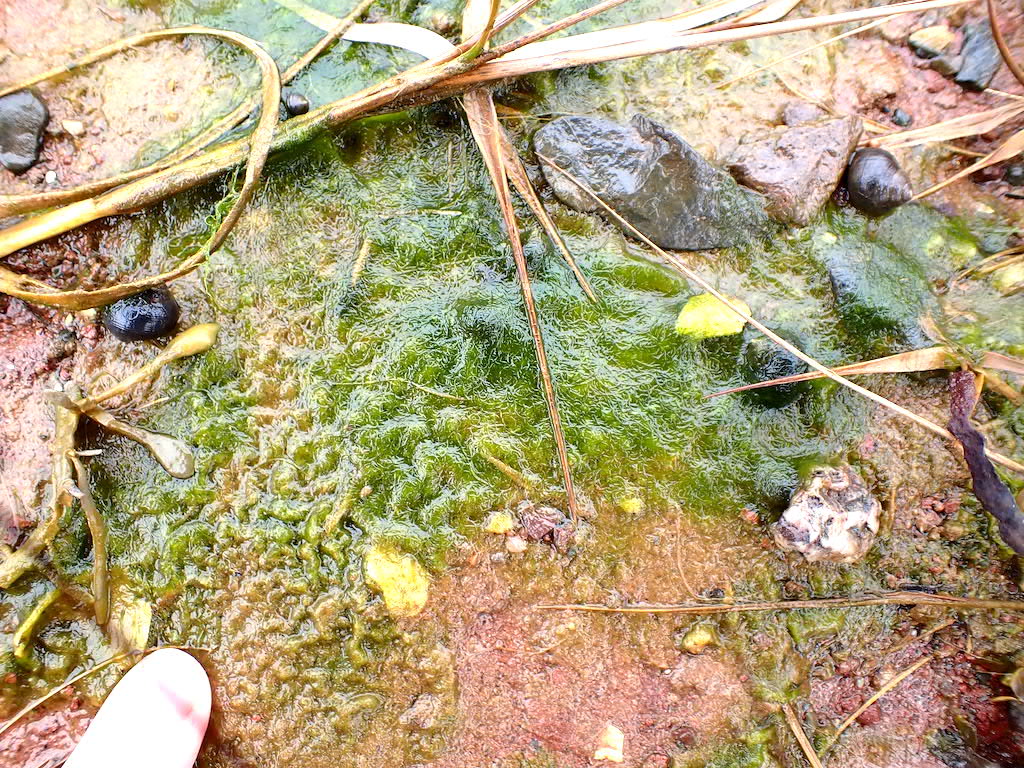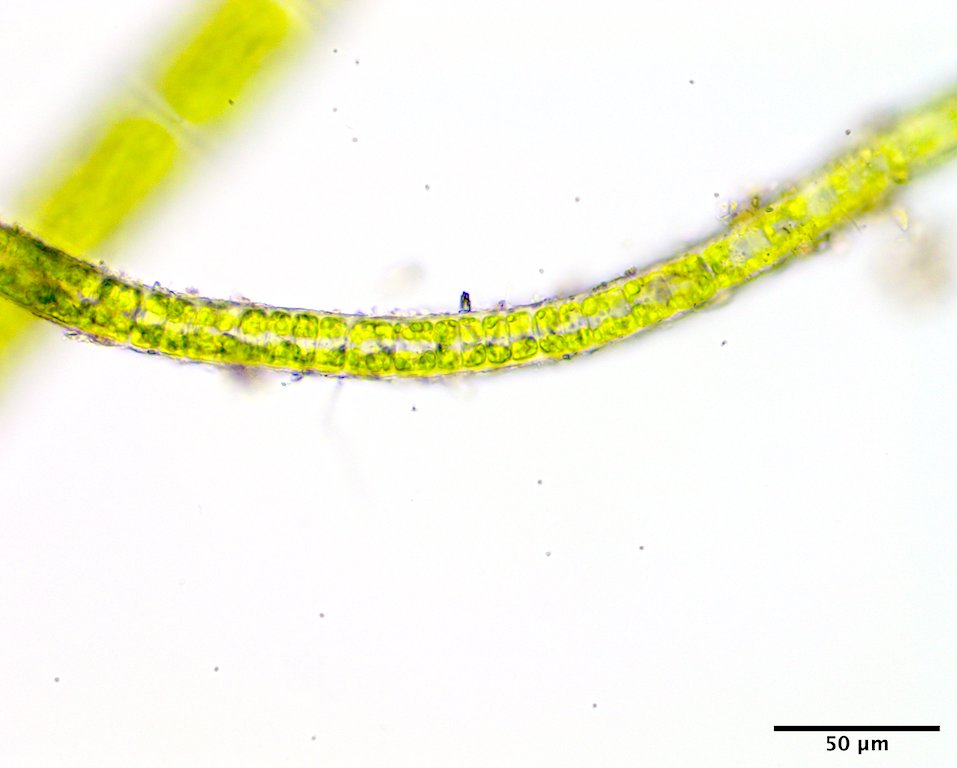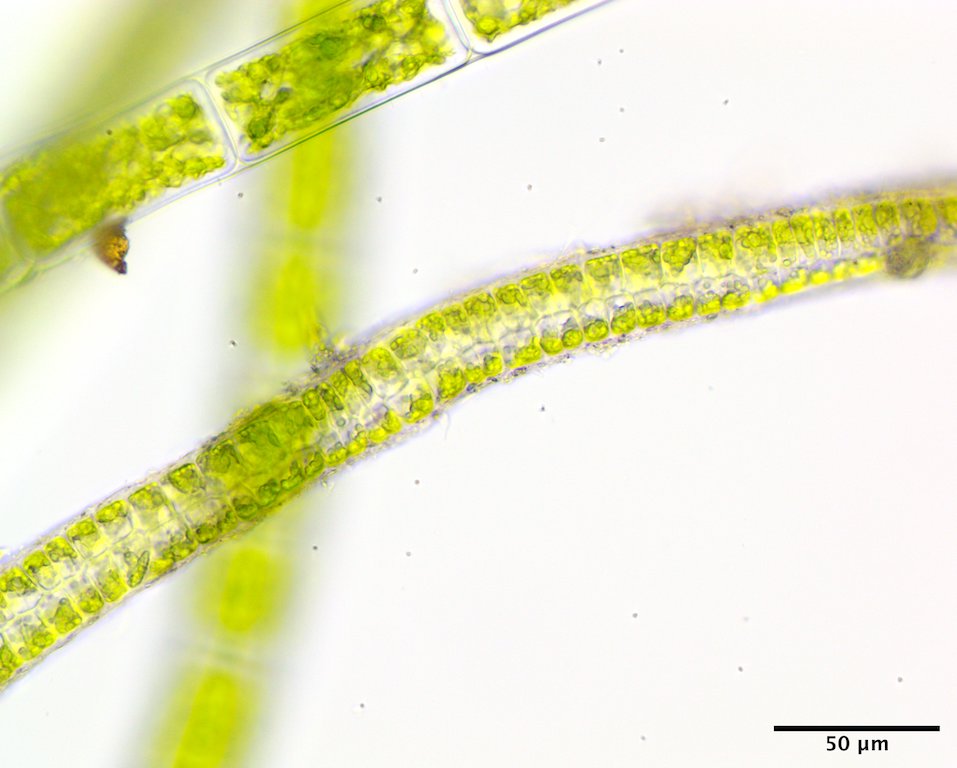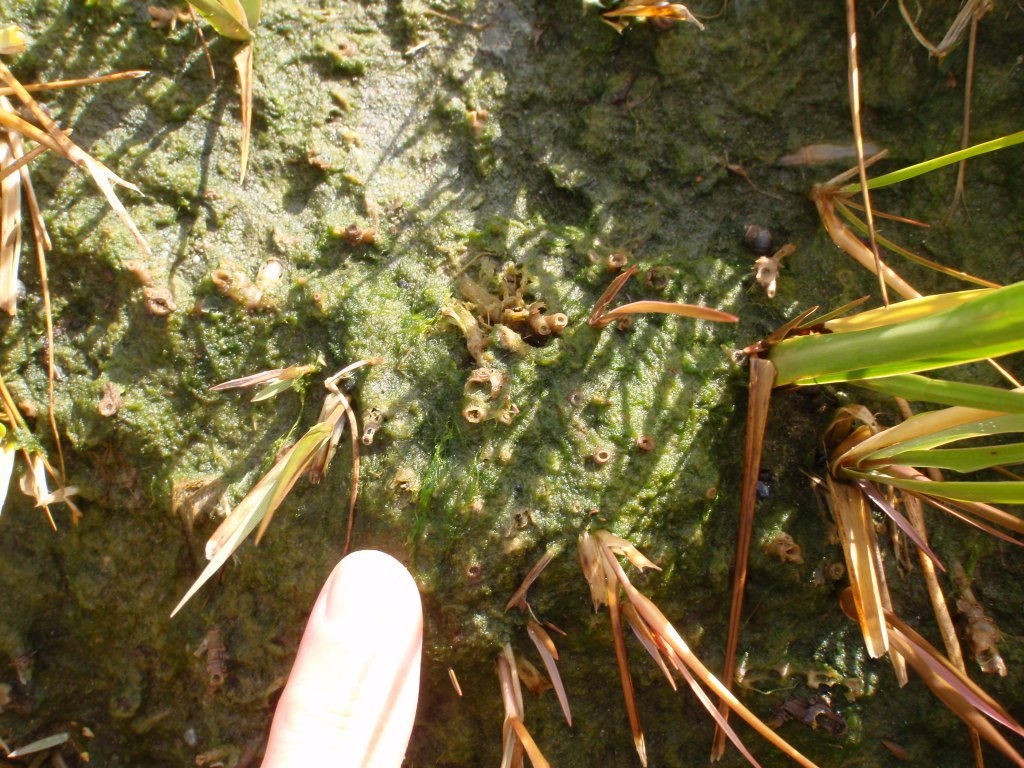This species is most commonly encountered in estuarine and brackish water habitats where it forms unattached green mats entangled with other green algae, which are themselves tangled among stalks of the various marsh vegetation (Image A). The unbranched filaments start out uniseriate, 17-20 µm wide, with disc-shaped to square cells that are 14-16 µm wide and only 7-14 µm tall, each containing a parietal ring to cup shaped chloroplast containing multiple pyrenoids (Image B). Filaments eventually become biseriate and up to 30 µm wide (Image C).
The limited genetic data for this species to date are consistent with its occurrence along all three of our coastal regions. The description above is based on a single collection and more data are needed to explore the morphological variation of this species. In addition, the full biogeographical and ecological range of this species await more molecular data. The budding seaweed enthusiast may confuse this species with Ulothrix spp. (e.g. ) Ulothrix flacca (Dillwyn) Thuret) where the filaments are uniseriate (Image B). Nonetheless, when the filaments transition to biseriate development (Image C) (up to four rows by some accounts) this species is easily identified from the tangled mix of green species with which it grows (Image A). On this last note caution is needed in acquiring sequence data from field-collected specimens as they can commonly co-occur with a handful of other green species. Experience has taught us that PCR does not always amplify the dominate species in such a tangled clump.

Image A. Mat dominated by Rhizoclonium riparium (Roth) Harvey among which rare filaments of Percursaria percusa were found (uppermost intertidal tangled with salt marsh vegetation, St. Andrews (Blockhouse), NB; GWS044465A).

Image B. Filaments are uniseriate over part of their length with the disc-shaped to square cells containing a parietal chloroplast with multiple pyrenoids (GWS044465A).

Image C. Filaments become biseriate revealing the habit typically associated with this species (GWS044465A).
